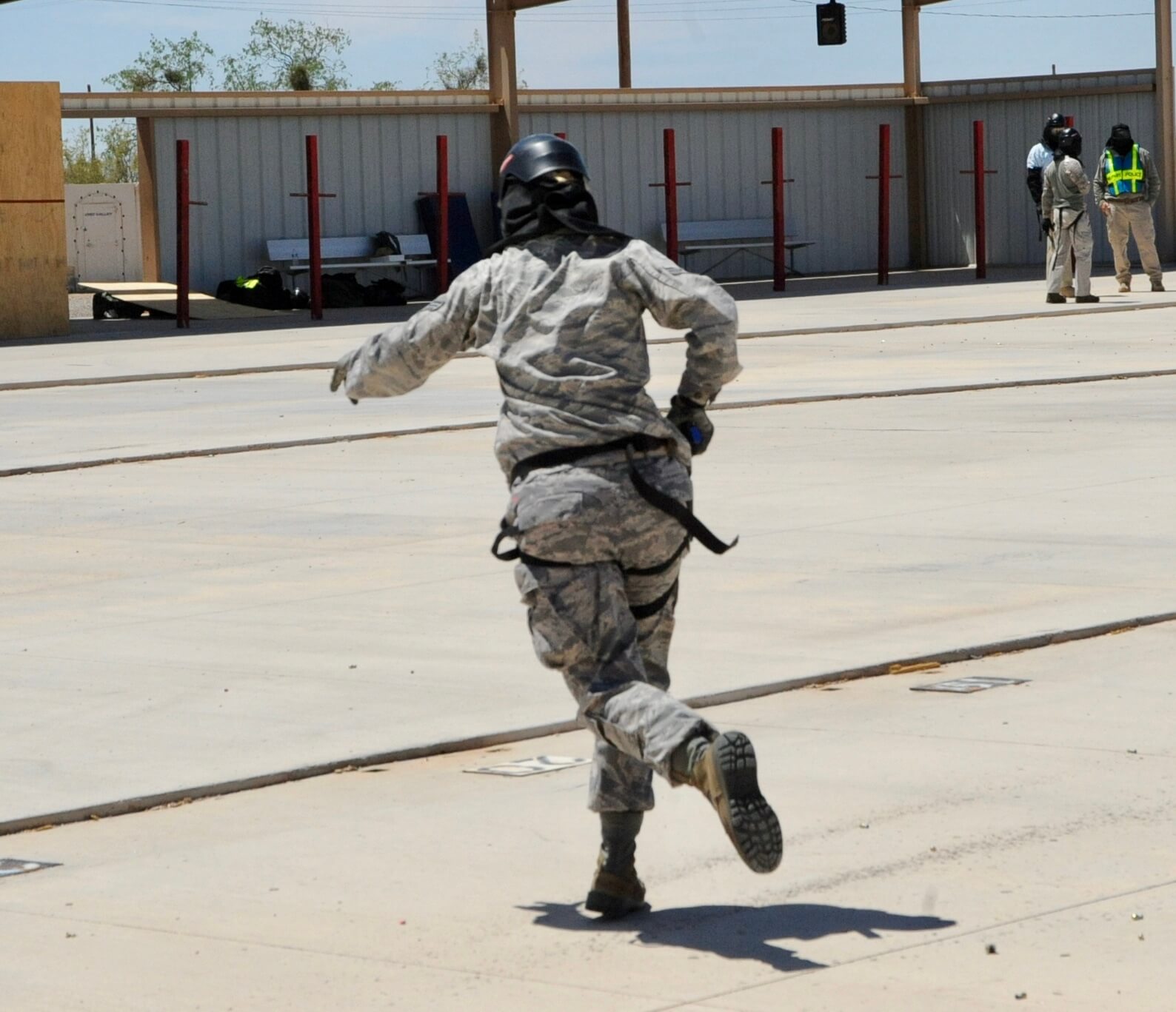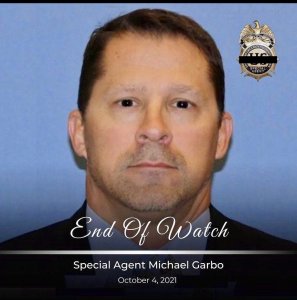What “fleeing” means–and what it doesn’t

On 13 Oct 2021, Tyler Olson and Bill Mears published a Yahoo! News article, “Boston Bomber case: Kavanaugh, Kagan clash in rare testy exchange over mitigating evidence.”
Usually, SCOTUS (Supreme Court of the United States) judges are cordial, even when they disagree. An occasional raising of voices, common in other work environments where people take their jobs seriously (as we would hope US Supreme Court justices do), is apparently so rare in the SCOTUS that when it does happen, it warrants a news article.
Useless Excuses
Certainly, the case in question does not. How guilty does a guy have to be? The surviving Boston Marathon Bomber was sentenced to die for his aptly heinous crimes. An appeals court overturned his death sentence because:
- the jury might not have been living in a cave without cable and thus might have heard about the bombing (who in the US didn’t?), and
- because the bomber who did not survive might have been involved in a triple homicide before the infamous Boston Marathon bombing, but the court did not introduce that possibility into evidence during the sentencing phase of the surviving Bomber’s trial.
Lemmie ‘splain #2. If you were accused of a crime, say, shooting up a restaurant, it’s not likely your brother’s possible prior involvement in a rape would be brought up at your trial, or even afterward when they were trying to decide on the appropriate punishment.
In this case, though, lawyers for the surviving bomber claimed that he was in “thrall” of his older brother, and therefore less culpable for his heinous deeds. Allegedly, the fact that his brother was likely involved in a jihad-inspired triple homicide before the bombing may have affected the other bomber’s “thrallness” level.
Let’s put this in context.
Suppose you had a thing for Jessica Alba. Like, REALLY had a thing.
Not some woman crush, but an almost stalker level, hang-on-her-every-word thing. Let’s just say you were “in thrall” of her. You would cater to nearly her every whim.
If (hypothetically, of course) Jessica Alba said to you, “Let’s fill some pressure cookers with explosives, nails, and ball bearings, and spark them off at a big sporting event filled with hundreds of people,” would you do it?
No?
Even if she promised to like you a lot?

I didn’t think so.
As Meatloaf sang,
“I would do anything for love, but I won’t do that.”
I did lots of stupid things when I was young. Some of them were morally very wrong. I may even have been influenced by charismatic friends. But I’d like to think that even on my stupidest, drunkest day I would never have placed a fragmentation bomb right behind an 8 year old kid.
One of the Boston Marathon bombers did exactly that.
With malice of forethought, he murdered that child, along with a 23 year old exchange student. The bomb his brother placed killed a 29 year old. Between them, their bombs maimed well over 200 people.

Every year, hundreds of cases that should get to the Supreme Court do not. There are only 365.25 days in a year, so they only have some much time on their docket. Every year, state legislatures and the US congress pass laws which may be of dubious constitutionality. Yet the Supreme court doesn’t have time to examine their constitutionality, in part because they’re wasting their time trying to determine what motivated this bozo to attempt mass murder.
Who cares what his motivations were? If I purposefully murder an 8 year old while trying to murder hundreds, I should be executed, but if I felt like I “had to” because my brother wanted me to, I shouldn’t?
There’s a forest somewhere behind those trees.
Disingenuous Reporting
That’s not the main thing that disturbs me about Olson and Mears’ article, though. After all, we live in the USA, where a person’s motivations are considered more important than the end results of his or her choices and actions.
What really disturbs me was the reporters’ phraseology in the following sentence:
[DT] was sentenced to death for his role in the 2013 bombings, which he carried out along with his brother [TT], who died while attempting to flee the police shortly after the attack.*
“. . . attempting to flee the police . . .”
Hmmm.
What image does that place in your mind?
“Flee” implies, and I believe Olson and Mears (or their editor) expect us infer, that he was running away and got shot in the back. Or at least that he was running away.
What was the deceased bomber (TT) actually doing when he had his final run-in with the law?
Events leading up to the bombers’ ambush of police in Watertown, Mass
First, some background. I didn’t get this from watching Mark Wahlberg in Patriots Day, although I thought it was a decent movie. I learned these things when I was on a Joint Terrorism Taskforce, from one of the FBI investigators who worked the Boston Marathon Bombing.
After examining voluminous security camera footage of the 15 Apr 2013 Boston Marathon, the FBI noticed that two people did not look in the direction of the blasts and screams when the bombs went off. Turned out they were the ones who placed the bombs.
“Rapaciously irresponsible” is a phrase I use neither commonly nor lightly. If memory serves, I first read it in regards to the USSR, and found it an apt description of the evil empire.
I believe it’s also apropos here.
The rapaciously irresponsible news media found out about the FBI’s suspects. Before the FBI could locate the men they had identified, the media threatened to release the images if the FBI didn’t first. They forced the FBI’s hand, endangering hundreds of Americans, and jeopardizing the success of the investigation.
Learning from our oh-so-responsible media that they were found out, the two Boston Marathon bombers decided to move up the timetable on their planned exit strategy, a massive killing spree in Times Square, New York.
The radicalized pair had a few logistical problems. They had built a few more bombs, but
- they only had one pistol, and
- they were worried about a possible police lookout on their car.
To get another pistol, the bombers went to the nearby Massachusetts Institute of Technology, and sneaked up behind an MIT police officer, Sean Collier, as he sat in his parked LE cruiser. They shot Collier in the head. They were too stupid to figure out how to get Collier’s duty pistol out of his retention holster, though. The suspects panicked, and fled–yes, actually fled at that point–the scene of Collier’s murder.

To deal with problem #2, the bombers carjacked an innocent person, Danny Meng, at gunpoint, then bragged to him that they were the bombers, and possibly discussed what they had planned for Times Square in front of him.
When they stopped for gas, Meng managed to flee–yes, actually flee–from his carjacking, murdering, terrorist kidnapers, and hid in a convenience store nearby.

Alerted to the suspects’ approximate location and given vehicle descriptions, police throughout the area made finding that BOLO (“Be On the LookOut for”) their mission in life.
An alert Watertown, Mass cop pulled them over.
Instead of attempting to flee, the older bomber came out shooting, ambushing the police officer.
The officer backed up, off the X (but not off the railroad tracks) of the bomber’s attack. Not wanting to be left out, and lacking his intended stolen pistol, the younger bomber–the one whose degree of guilt the Supreme Court of the United States was debating–started hurling bombs through the neighborhood at the cops.

Hundreds of rounds were exchanged in that gun battle. The pistol-armed brother fired about 56 rounds, till his pistol stopped working, then hurled his pistol at the cops.
Does that sound like “fleeing” to you? The police, however, had not killed either brother in the gun- (and grenade-like) fight.
The officer he threw the gun at, Sgt Jeffrey Pugliese, holstered his pistol and tackled him.
That’s right.
That’s what makes the USA the greatest country on earth. You can intentionally kill civilians, maim hundreds of people, murder a cop in cold blood, carjack somebody at gunpoint, and then try your very hardest to murder other cops, and the moment your gun stops working, instead of gunning you down like the rabid dog you are, the cops you were just trying to murder seconds before will arrest you.

Though wounded, the older brother was still struggling with the cops who had tackled and were trying to cuff him when his younger brother, the one whom the defense claimed was “in thrall” of him, ran him over and killed him.
The brother who was killed was NOT fleeing. The other one was.
Why am I getting hung up on semantics? It was one silly word. Perhaps an ill-chosen word, or maybe just an oversimplification in an effort to save space in an article that was really about two SCOTUS justices having a newsworthy little tiff?
I believe the word “fleeing” was NOT ill-chosen. I believe Olson and Mears (or their editor) chose that disingenuous word as part of a deliberate, ongoing attempt to advance the ACAB (“all cops are bastards”) narrative.
It’s the narrative our news media has, in lock-step, been promoting for years: the propaganda campaign that is one proximal cause of the breakdown in law and order that has led to unprecedented levels of violence in our society.
If you take your car to a mechanic, you expect that mechanic to know how to fix cars. Journalists are wordsmiths by trade. We should expect them to know the meaning of one-syllable verbs like “flee.”
I’m guessing the use of that dishonest word was not a mistake.
It was a bold-faced lie.
A lie with intentional, negative consequences. A lie that is costing lives.
Even if it wasn’t (and I believe it WAS), my dad used to tell us kids:
“We are not interested in distinguishing between the unfortunate and the inefficient; the result is the same.”
I am not attempting to paint all reporters with one broad brush. My brother and my sweet sister-in-law, both of whom I love, have been journalists. The best intelligence analyst I ever worked with was a former journalist. I have friends who are still journalists. Heck, me writing this article is a form of journalism.
Many reporters try to be responsible. For all I know, Olson and Mears wrote “in a gun battle with police” instead of “while attempting to flee the police” in the draft they submitted for that article.
But only a few corporations own 90% of our nation’s news media. Editors are under pressure from those who sign their paychecks to advance the agenda they are given from on high. Numerous “defecting” reporters have testified to this. You don’t read about that much in the news, because–well, re-read this paragraph if you don’t understand why.
The Fleeing Felon Doctrine
If the bomber HAD been fleeing–I reiterate, he was NOT–the police WOULD have been justified in using what Malcolm X called “any means necessary” to stop him.
In the bad old days of English Common Law, most felonies were punishable by death. Since a convicted felon was expected to be killed for his crimes, it did not seem to matter much if he was killed trying to flee before being convicted. Law enforcers were instructed to “bring him in dead or alive.”
As English Common Law (an extension of older Roman and Norman laws) became one basis for our state and national statutory laws (written statutes passed my legislative majorities), one difference between a misdemeanor and a felony was that deadly force was legally justified when apprehending felons.
While that broad-brush approach to apprehending felons was intended to maintain law and order, it resulted in some disproportionate uses of force, even miscarriages of justice.
For example, when I went through a state police academy in 1995, one of the most important Supreme Court cases they wanted us to know about was Tennessee v. Garner.
Tennessee v. Garner
On 03 Oct 1974, Memphis police officers responding to a burglary in progress found a 15 year old running through a back yard. When ordered to halt, the juvenile burglar, Edward Garner, turned and showed his empty hands. When he turned back around and tried to climb a fence, an officer shot and killed him.
Stolen items from the house were found on Garner’s person. The use of deadly force under those circumstances was authorized at the time, by both Tennessee law and Memphis PD policy.
Garner’s father sued under civil rights statutes. The SCOTUS, which had previously gauged such uses of force under other Constitutional provisions (such as the 5th / 14th amendments’ right to Due Process), chose instead to view the shooting of Garner (and all such future shootings) as a “seizure” under the Fourth Amendment.
The ultimate seizure. A permanent, irrevocable seizure. One in which the seized can not simply go by the property room after being declared not guilty to recover his or her property: their life.
In order to be constitutional, a Fourth Amendment seizure must be reasonable. It was clearly not reasonable to shoot an unarmed kid, burglar or not, who was running away and posed little or no danger of violence.
However, the SCOTUS held that it is still perfectly reasonable, and therefore lawful, to shoot at a fleeing felon if “necessary to prevent the escape and the officer has probable cause to believe that the suspect poses a significant threat of death or serious physical injury to the officer or others.”
Although the officers had little way of knowing the Boston Marathon terrorists were en route to Times Square for another death spree, one of the best predictors of future behavior is past behavior. Even a knuckle-dragging, low-IQ cop like me could easily articulate that:
- They had recently blown up hundreds of people
- They just murdered a cop
- They just carjacked a guy at gunpoint
Even if they had NOT come out shooting and hurling explosives when pulled over (they DID), even if they had been “fleeing” (they were NOT), the cops would have been justified in giving the Boston bombers the Bonnie and Clyde treatment.

Unintended Consequences
Tennessee v Garner was a rational and just application of the US Constitution’s meaning and intent, correcting imperfect state laws and local law enforcement policies. However, certain criminal elements have taken advantage of it. Contrary to increasingly popular belief,
- There is NO constitutional right to commit felonies, even if they are “non-violent” crimes.
- There is NO constitutional right to flee from the police.
- There is NO constitutional right to resist or attack the police while they are attempting an arrest, attempting to restore safety at scenes of disorder or emergency, or while they are investigating crimes–even so-called “non-violent” crimes.
As a career police Use of Force and Officer Survival instructor, I constantly relayed the timeless (and statistically corroborated) wisdom that a suspect who is desperate enough to flee is desperate enough to fight.
That’s one of the main reasons Chris Rock was right when he said
“If the police have to come and get you, they’re bringing an ass-kicking with them.”
If you are chasing a suspect, run fast, but SLOW DOWN, SLICE THE PIE, AND ASSESS before you round a corner. Recently (on 04 Oct 2021), DEA Supervisor Mike Garbo chased a suspect onto an Amtrak train in Tucson. Mike was shot and killed.

The same thing has happened to hundreds of other law enforcers who were pursuing dangerous suspects.
Contrary to popular belief, when somebody breaks the law, the police are obligated to try and stop them. It’s what you pay the police to do. They’re not supposed to say, “Screw it. Clearly, that guy doesn’t want to get caught. Even if we do catch him, he might not want to be arrested, so he may fight, and I don’t feel like being indicted if he breaks a fingernail while stabbing me in the eye with a pencil. Let’s just go get a doughnut.”
Lessons for Responsibly Armed Citizens:
If you are in a gun fight, and the bad guy drops his gun and runs away, the jury will be instructed to apply the same logic to you as they do to the cops: did the bad guy constitute a threat of death or grave bodily harm at the moment you decided to pull the trigger?
If, on the other hand, he is performing a retrograde leapfrog from cover to cover, still holding on to his gun and still shooting periodically, you will be tactically, morally, and legally justified if you shoot at him while he’s between covered positions, even if your bullet enters aft of his mid line (his rear flank, what reporters call “in the back”) when you do.
Clear as mud? For further information about Lawful Use of Force (at least in Arizona), read “Stand Your Ground” and “Castle Doctrine” in Arizona.
And, when perusing the news feeds, don’t believe everything you read.
Rather, be like Marvn Gaye:
“Believe half of what you see . . .
. . . and none of what you hear.”
–Your Uncle George
Source notes:
*At the risk of losing clarity, I have substituted the bombers’ initials for their names in this quote, because I agree with the premise and goals of No Notoriety. I’ve also underlined the questionable phrase, and put it in italics.
“Half of what you see” lyrics are from the classic Motown R&B single, “Heard It Through the Grapevine,” written by Norman Whitfield and Barrett Strong. Numerous artists covered it. Marvin Gaye’s is my favorite (nobody sings “losing yoooooooou” like Marvin did), although the extended guitar riff of Creedence Clearwater Revival’s long version is also awesome.
I originally had a link to Mears’ and Olson’s “Boston Bomber case” Yahoo! News article so you could read the whole thing, and evaluate its merits yourself. On 13 Nov 2021 my broken link checker notified me that the link to the Yahoo! article no longer worked.
